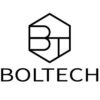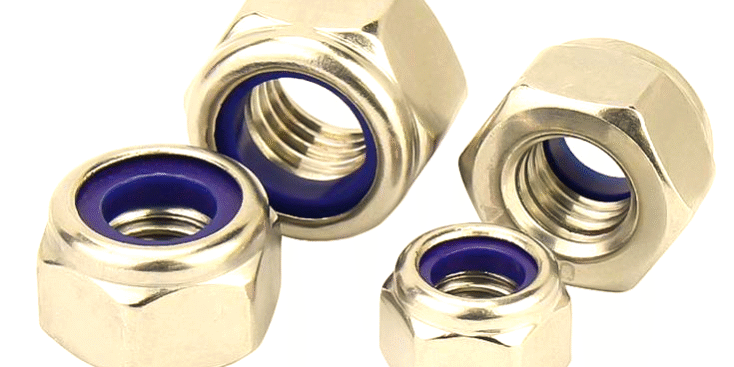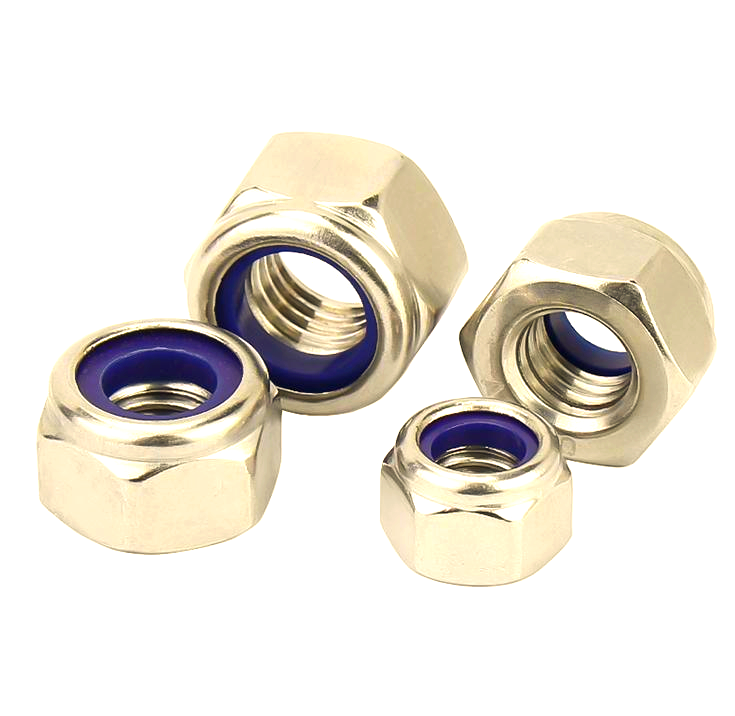In machinery, aerospace frames, automotive suspensions, and industrial equipment, the catastrophic failure of a single bolt or nut can cascade into costly downtime, safety hazards, or even loss of life. Research indicates that vibration-induced loosening causes over 70% of bolted joint failures in dynamic environments 110. Unlike static overload, vibration—especially transverse vibration (movement perpendicular to the bolt axis)—creates micro-slippage between threads and clamped surfaces. This slippage allows the nut to “walk” down the helical ramp of the bolt threads, progressively eroding clamping force (preload) until the joint fails 3 6 10. With industries like electric vehicles and wind turbines pushing mechanical systems to higher stresses, implementing validated anti-loosening solutions is non-negotiable. This guide synthesizes engineering research, global testing standards, and field-tested best practices to secure your critical connections.
1. The Science of Loosening: Why Vibration Defeats Conventional Fasteners
Transverse vibration is the primary driver of bolt self-loosening. Here’s the failure sequence validated through laboratory testing:
- Initial Micro-Slip: Vibration causes nanoscale movement between bolt threads, nut threads, and joint interfaces.
- Friction Overcome: Local friction forces under the nut face or bolt head are defeated, enabling rotation.
- Unwinding (“Walking”): The nut rotates incrementally along the bolt’s thread helix, reducing preload with each cycle.
- Accelerated Failure: Preload loss increases joint movement, exponentially accelerating loosening .
A pivotal 2019 study confirmed that preload relaxation follows a logarithmic decay pattern under sustained vibration, with 60–80% of preload loss occurring in the first 20% of a joint’s vibrational lifespan . This underscores the critical need for preventive anti-loosening measures—not just reactive maintenance.
2. Anti-Loosening Solutions: Mechanisms, Performance Data & Industry Applications
A. Mechanical Locking Devices (Friction-Based & Positive Locking)
- Prevailing Torque Locknuts:
- Nyloc Nuts: Embed a nylon collar that creates radial friction. Effective for moderate vibration but degrades above 120°C and offers limited reusability. Junker tests show 40–60% preload retention after 1,500 cycles 17.
- All-Metal Lock Nuts (e.g., Stover, Aerotight): Use elliptical or deformed threads for friction. Reusable and temperature-resistant. Retain 70–85% preload in Junker tests—ideal for automotive engines .
- Specialty Washers:
- Nord-Lock Washers: Paired cam-and-tooth washers. Cams lock under tension; teeth grip surfaces. Transverse vibration increases clamp load. Junker-tested to retain 90–100% preload after 20,000 cycles .
- Serrated/Toothed Washers: Bite into mating surfaces. Low cost but only 10–30% preload retention in vibration. Often combined with other methods .
- Positive Locks:
- Castle Nuts + Cotter Pins: Physically block rotation. Near-zero loosening but require drilled bolts and manual installation. Used in aircraft landing gear .
B. Chemical Locking (Threadlockers)
Anaerobic adhesives cure in thread clearances, forming a solid polymer layer. Performance varies by grade:
- Low Strength (e.g., Loctite 222™): For small fasteners (<M6). Easy disassembly; retains 80% preload.
- Medium Strength (e.g., Loctite 243™™): Oil-tolerant; survives high vibration. Retains 95%+ preload in automotive drivetrain tests 5 .
- High Strength (e.g., Loctite 271™): Near-permanent lock. Requires heat for removal. Critical for turbomachinery.
Independent studies rank chemical locking as the #1 solution for vibration resistance, outperforming nylock and aerotight nuts by 25–40% in preload retention .
C. Design Engineering Solutions
- Double Nuts: When tightened asymmetrically (e.g., 70% torque on lower nut, 100% on upper), preload retention improves by 30% versus equally torqued pairs 4.
- Preload Optimization: Joints clamped at ≥75% of bolt proof strength resist slippage 3x longer than undertorqued equivalents .
- Bolt Tensioning: Hydraulic tensioners achieve ±5% preload accuracy versus ±30% for torque wrenches. Essential for wind turbine flange joints .
*Table: Anti-Loosing Solution Performance Under Vibration (Junker Test DIN 65151)*
| Solution | Preload Retention (%) | Reusability | Temp Limit | Best For |
|---|---|---|---|---|
| Medium-Strength Threadlocker | 95+ | Low★ | 150°C | Automotive, Electronics |
| Nord-Lock Washers | 90–100 | High | 300°C | Mining, Energy, Rail |
| All-Metal Lock Nut | 70–85 | High | 900°C (Inconel) | Aerospace, Exhausts |
| Nyloc Nut | 40–60 | Limited | 120°C | HVAC, Consumer Goods |
| Spring Washer | 10–20 | Moderate | 300°C | Non-Critical Static Loads |
| ★Low-strength threadlockers allow reuse; medium/high require cleaning . |
3. Validating Performance: Vibration Testing Standards & Certified Compliance
Laboratory vibration testing is non-negotiable for anti-loosening claims. Key standards include:
- Junker Test (DIN 65151/ISO 16130): Applies transverse vibration at 12–15 Hz. Measures cycles until 100% preload loss. The gold standard for automotive, aerospace, and industrial fasteners 5.
- NASM 1312-7: Military/aerospace standard with multi-axis profiles.
- UL Solutions Functional Safety Certification: Validates solutions against ISO 26262 (automotive), IEC 61508 (industrial), and ISO 13849 (machinery). Recently accredited by ANSI/ANAB to ISO/IEC 17065—reinforcing global credibility .
Certification bodies like UL Solutions employ these tests to audit anti-loosening products, ensuring they meet functional safety requirements for autonomous vehicles, robotics, and energy systems .
4. Industry-Specific Best Practices & Implementation Guidelines
A. Automotive & Transportation
- Solutions: All-metal lock nuts + medium-strength threadlockers (e.g., transmission mounts). Nord-Lock washers for EV battery trays .
- Best Practice: Torque-to-yield (TTY) bolts with angle monitoring for head assemblies. Junker testing mandatory for safety-critical components.
B. Aerospace & Defense
- Solutions: Chemical locking (high-strength), castellated nuts, and NASM-compliant prevailing torque nuts8.
- Best Practice: Ultrasonic preload verification + 100% batch testing per NASM 1312-7.
C. Energy & Heavy Machinery
- Solutions: Nord-Lock washers for wind turbine flanges; hydraulic tensioning for reactor vessel studs.
- Best Practice: Digital twin modeling to predict preload decay in offshore platforms.
Universal Implementation Rules:
- Surface Prep: Degrease threads with acetone or heptane. Contaminated surfaces reduce threadlocker strength by 60%.
- Precision Torque: Use calibrated tools with ±3% accuracy. Apply tensioning for >M24 bolts.
- Environmental Guardrails: Specify stainless steel fasteners + corrosion-resistant threadlockers for offshore or chemical exposure.
- Inspection Intervals: Monitor critical joints quarterly via torque auditing or ultrasonic preload measurement.
5. Future Frontiers: Smart Fasteners & Multi-Physics Modeling
Research is advancing beyond mechanical fixes:
- Embedded Sensors: Bolts with strain gauges or RFID tags enabling real-time preload monitoring in bridges or turbines.
- AI-Powered Simulation: NEVADA University’s 2024 study modeled composite bolted shells using fractal contact theory, predicting vibration modes without physical testing .
- Additive Manufacturing: Topology-optimized nuts with lattice structures for vibration damping.
Conclusion: Building Trust Through Science and Compliance
Vibration-induced loosening isn’t guesswork—it’s a quantifiable enemy. Combating it demands:
- Solution Validation: Specify products tested per DIN 65151/ISO 16130 and certified by UL Solutions or ANSI/ANAB bodies.
- Lifecycle Management: Integrate anti-loosening design from CAD through maintenance using digitally traceable standards.
- Expert Collaboration: Partner with fastener engineers for industry-specific risk assessments.
By anchoring decisions in empirical data and certified solutions, engineers transform bolts from liabilities into lifelines. As infrastructure ages and machines push new limits, the integrity of every threaded joint becomes a testament to the rigor behind it.
*For certified anti-loosening solutions meeting ISO 26262, IEC 61508, or ISO 13849, consult UL Solutions’ ANSI/ANAB-accredited programs .*







